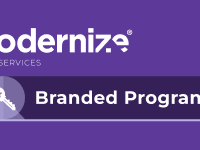Homeowners invest in home security systems to protect their families, property, and peace of mind. Whether your company specializes in smart alarms, video surveillance, or whole-home monitoring systems, your success depends on connecting with homeowners ready to take action.
This guide explains how home security providers can generate qualified homeowner inquiries, improve local visibility, and measure ROI from their marketing efforts.
- What Is a Home Security Lead and Why Does It Matter?
- How Can Home Security Companies Attract Leads Online?
- Are Lead Generation Services Worth It for Home Security Providers?
- How Quickly Should Providers Respond to Home Security Leads?
- How Do Home Security Companies Measure ROI from Lead Generation?
- What Types of Home Security Projects Are Most In Demand?
- What Trends Are Driving Home Security System Demand?
- Key Takeaways
- FAQ: Everything You Need to Know About Home Security Leads
What Is a Home Security Lead and Why Does It Matter?
A home security lead is a homeowner or renter actively researching or requesting quotes for home alarm systems, video surveillance, or smart monitoring. These leads are typically high intent because most buyers are motivated by immediate safety concerns, property upgrades, or insurance savings.
Access to verified home security leads allows providers to connect with consumers ready to purchase or schedule installation. Whether you focus on smart home integration, wired systems, or monitored solutions, every qualified lead represents a strong opportunity to build recurring revenue and customer trust.
To understand how Modernize evaluates and prices homeowner and consumer leads, see How Much Do Modernize Leads Cost.

How Can Home Security Companies Attract Leads Online?
Most homeowners start their search online with queries like “home security systems near me” or “best smart alarm for homes.” To reach those consumers effectively:
- Optimize for local SEO: Include service-based keywords such as “home security installation in [City]” or “video surveillance setup near me.”
- Maintain your Google Business Profile: Keep your contact info, service areas, and verified reviews up to date.
- Encourage customer testimonials: Positive feedback reinforces trust for families making high-stakes safety decisions.
- Publish educational content: Blog about topics like “how to choose a smart home alarm” or “wired vs. wireless security systems.”
- Showcase real installations: Include before-and-after photos or customer case studies to demonstrate professionalism and results.
Consistent online visibility ensures your company appears when homeowners are ready to schedule consultations or request quotes.
Are Lead Generation Services Worth It for Home Security Providers?
Lead generation services can help security companies reach motivated homeowners who are actively comparing systems and pricing. The most effective programs offer:
- Transparent pricing and flexible budgets
- Verified homeowner or renter data
- Real-time delivery of qualified inquiries
- Targeting by location, system type, or property size
- Performance tracking and ROI reporting
Before purchasing leads, evaluate how providers verify consumer intent, filter by service area, and manage project categories.
For more insight into Modernize’s process, see What to Expect When You Sign Up for Modernize Leads.
How Quickly Should Providers Respond to Home Security Leads?
Speed and professionalism make a critical difference. Homeowners seeking security solutions are often comparing multiple companies, and the first provider to respond typically earns the sale.
To improve your conversion rate:
- Respond to new leads within minutes.
- Use CRM or text notifications for immediate follow-up.
- Reference the homeowner’s stated goals, such as “smart home integration” or “24/7 monitoring.”
For more response tips, see Modernize’s Guide to Lead Follow-Up Best Practices.
.
How Do Home Security Companies Measure ROI from Lead Generation?
Tracking and analyzing campaign performance helps identify which marketing sources drive the best results:
- Cost per lead (CPL): The average amount spent to acquire each qualified inquiry.
- Conversion rate: The percentage of leads that turn into scheduled consultations or installations.
- Customer lifetime value (CLV): Total revenue from each subscription or monitoring plan.
- Return on ad spend (ROAS): The overall profitability of your marketing investment.
To learn how Modernize helps contractors analyze performance data, explore the Modernize Data Feedback Loop.
What Types of Home Security Projects Are Most In Demand?
Understanding homeowner preferences helps tailor your marketing approach:
- Smart Home Security Systems: Integrated alarm, camera, and automation controls; average $800–$2,500 installation.
- Video Doorbells and Surveillance Cameras: Affordable add-ons for visual monitoring; $200–$1,000 per unit.
- Monitored Alarm Systems: Subscription-based 24/7 protection; $30–$60/month.
- Wireless Security Systems: Easy to install and expand; typically $400–$1,200.
- Comprehensive Smart Home Packages: Include lighting, locks, and thermostats; $2,000–$5,000+.
What Trends Are Driving Home Security System Demand?
Several homeowner and market trends continue to drive steady demand for home security systems:
- Smart technology adoption: Homeowners are integrating cameras, locks, and alarms through centralized apps.
- Insurance incentives: Many insurers offer discounts for verified security system installations.
- Remote monitoring: Families value real-time notifications and control while away from home.
- DIY expansion: Self-install options appeal to tech-savvy homeowners.
- Energy and safety integration: Modern systems combine intrusion detection with fire, CO2, and flood sensors.
By aligning your services with these homeowner priorities, your business can attract high-intent, safety-focused leads.
Key Takeaways
-
Home security leads connect providers with homeowners ready to invest in safety and smart technology.
-
Local SEO, verified reviews, and rapid follow-up improve conversion rates.
-
Tracking CPL, conversion rate, and CLV helps optimize marketing performance.
-
Smart integration, insurance savings, and remote monitoring trends continue to drive homeowner demand.



